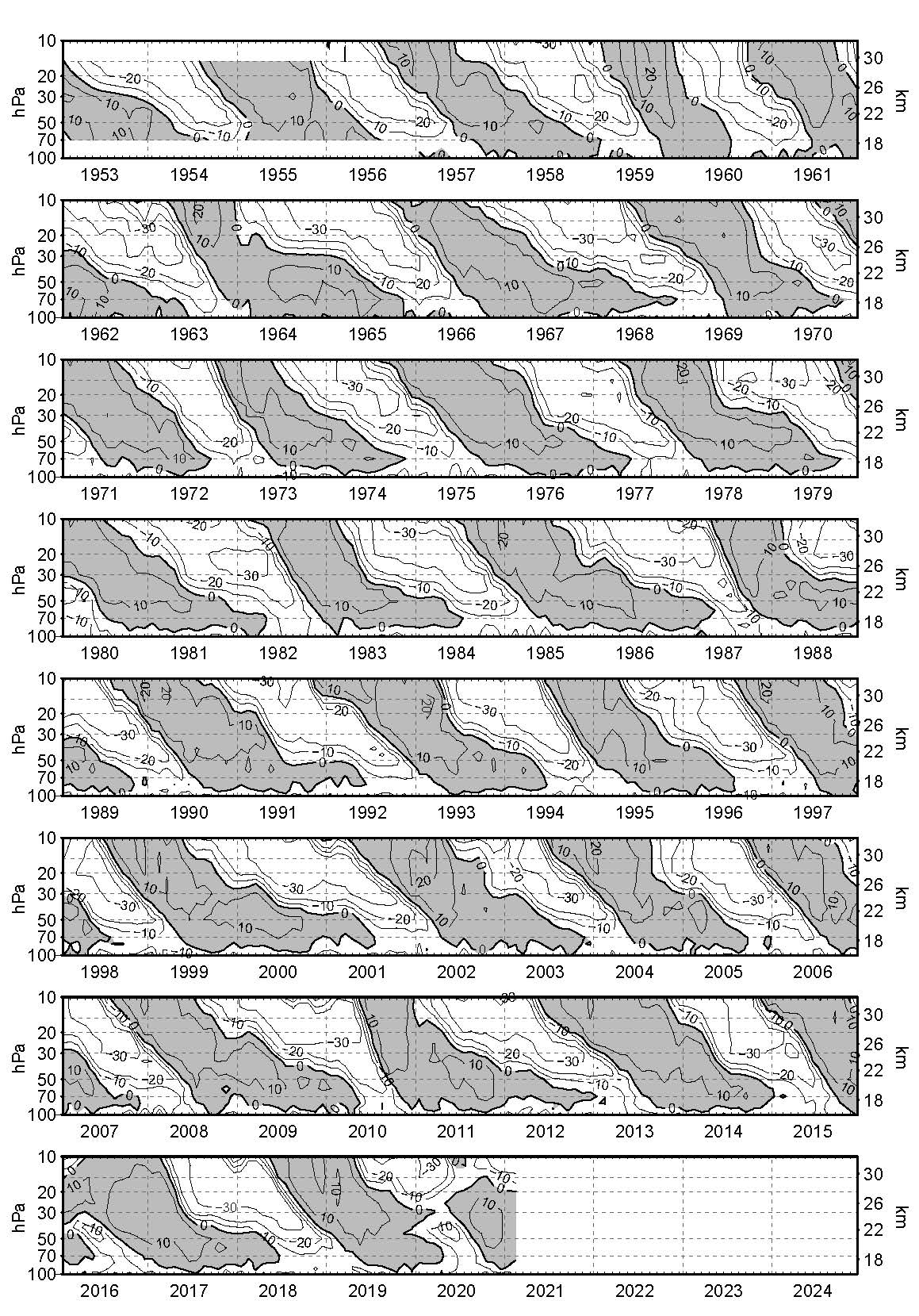Model topic: QBO
Overview
Teaching: 0 min
Exercises: 0 minQuestions
How to analyze QBO using CMIP6 data?
Objectives
Learn about QBO
Learn to analyze CMIP6 data
Introduction
The quasi-biennial oscillation (QBO) (Baldwin et al 2001):
- dominates the variability of the equatorial stratosphere (16-50 km).
- is a downward propagating easterly and westerly wind regimes, with a variable period averaging approximately 28 months.
- is a coherent, oscillating mean flow that is driven by propagating waves with periods unrelated to that of the resulting oscillation.
- affects the stratospheric flow from pole to pole by modulating the effects of extratropical waves (impact on the polar vortices).
- impacts atmospheric dynamics, and chemical constituents (e.g. ozone, water vapor, and methane).
Research questions
- I. Do CMIP6 models resolve the QBO; what is the QBO period; are there any hickups in the modelled QBO?
- II. QBO impacts?
- III. How is the QBO generated?
- IV. Do increasing GHGs impact the QBO?
Data
- CMIP6 model data, historical period (1850-2014 CE) and future scenarios
- Observations: FUB QBO record (Naujokat et al 1986 and updates; FUB data)
References
- Lecture slides and material
- Naujokat et al., 1986
- QBO review paper: Baldwin et al., 2001
- QBO hick-up: Newman et al., 2016; Osprey et al., 2016; Anstey et al, 2020
Key Points
QBO
